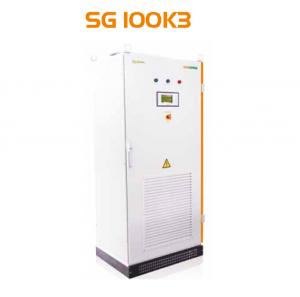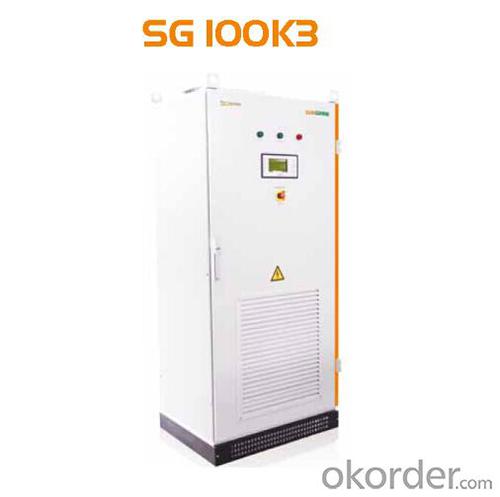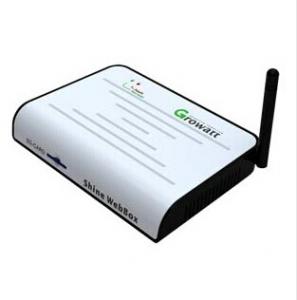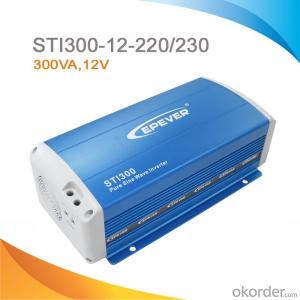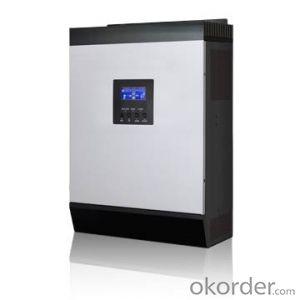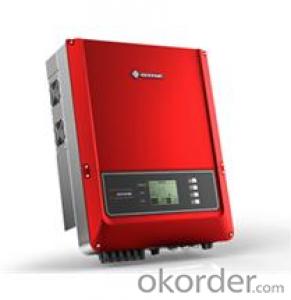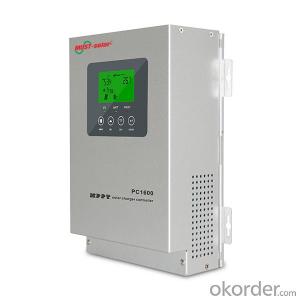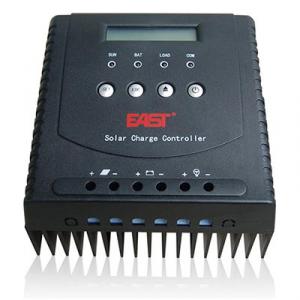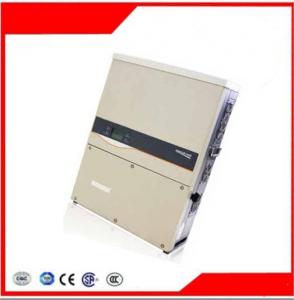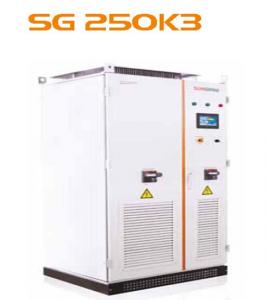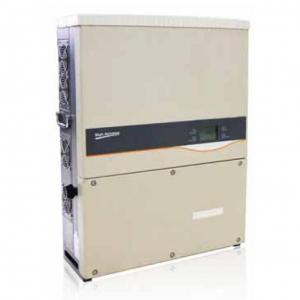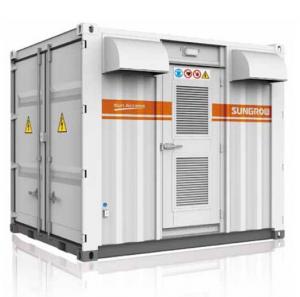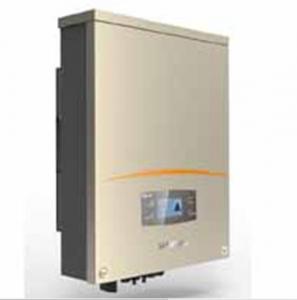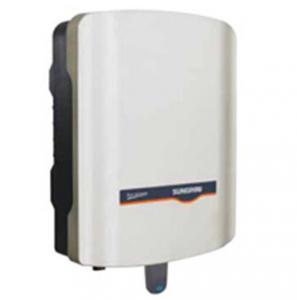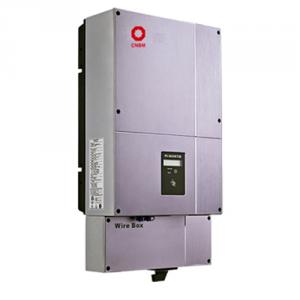12 Volt MPPT Solar Inverter Photovoltaic Grid-Connected Inverter SG100K3
- Loading Port:
- China Main Port
- Payment Terms:
- TT or LC
- Min Order Qty:
- 30 unit
- Supply Capability:
- 1000 unit/month
OKorder Service Pledge
OKorder Financial Service
You Might Also Like
1. Structure of Photovoltaic Grid-Connected Inverter SG100K3 Description
A solar inverter, or PV inverter, or Solar converter, converts the variable direct current (DC) output of a photovoltaic (PV) solar panel into
autility frequency alternating current (AC) that can be fed into a commercial electrical grid or used by a local, off-grid electrical network.
It is acritical BOS–component in a photovoltaic system, allowing the use of ordinary AC-powered equipment. Solar inverters have
special functions adapted for use with photovoltaic arrays, including maximum power point tracking and anti-islanding protection.
Suitable for 50Hz/60Hz grid, could be used in Asia, Australia and Europe.
2. Main Features of the Photovoltaic Grid-Connected Inverter SG100K3
* Advanced Technology, Grid-friendly
• Optional low-voltage and zero-voltage ride through to cope with various grid conditions
• SVG function at night, response to grid directives around the clock
• Reactive power control with power factor from 0.9 lagging to 0.9 leading
* More Compact, Saving Space for PV Plant
• Power density enhanced 40%, one of the central inverters with highest power density in the PV industry
• Save installation spaces and lower the plant initial cost
• Front maintenance, able to install against the wall, convenient installation and maintenance, saving operation cost of the PV plant
* Efficient, More Yields
• Max. efficiency at 97.3% with transformer
• Efficient MPPT control strategy, improve power yields
• 28335 chips adopted, more accurate calculation, more power yields
* More Advantages
• Perfect protection and fault alarm system, safe and reliable
• User-friendly dynamic graphics LCD
• Efficient PWM algorithm, low consumption of switch
• Operate without power derating at -25℃ - +55℃
• Reliable and continues operation in high altitude environment
• Auxiliary heater (opt.)
• CGC certification, compliance with BDEW
3. Photovoltaic Grid-Connected Inverter SG100K3 Images
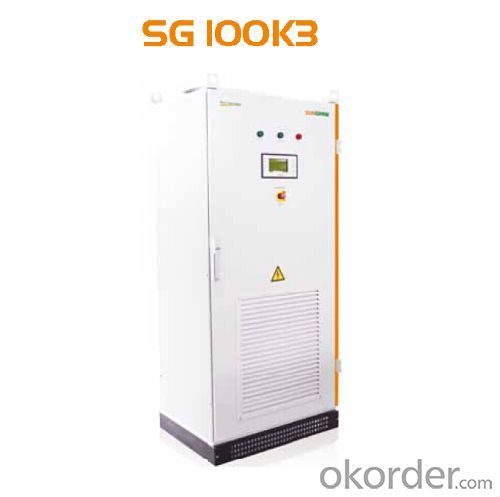
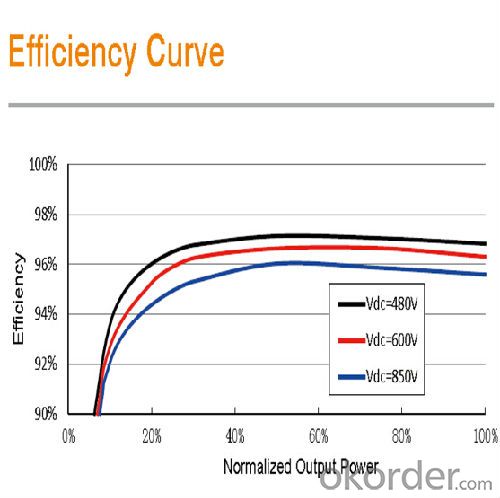

4. Photovoltaic Grid-Connected Inverter SG100K3 Specification
Input Side Data |
|
Max. PV input power | 113KW |
Max. PV input voltage | 1000V |
Set-up voltage | 500V |
Min. operation voltage | 480V |
Max. PV input current | 236A |
MPP voltage range | 480~850V |
No. of DC inputs | 4 |
Output Side Data |
|
Nominal AC output power | 100KW |
Max. AC output apparent power | 110KVA |
Max. AC output current | 158A |
THD | <3%(Nominal power) |
Nominal AC voltage | 400V |
AC voltage range | 310V~450V |
Nominal grid frequency | 50/60Hz |
Grid frequency range | 47~52Hz/57~62Hz |
Power factor | >0.99@default value at nominal power, adj. 0.9 overexcited ~0.9 underexcited |
Isolated transformer | Yes |
DC current injection | <0.5 % In |
Efficiency |
|
Max. efficiency | 97.30% |
European efficiency | 96.70% |
Protection |
|
Input side disconnection device | Breaker |
Output side disconnection device | Breaker |
DC overvoltage protection | Yes |
AC overvoltage protection | Yes |
Grid monitoring | Yes |
Ground fault monitoring | Yes |
Insulation monitoring | Yes |
General Data |
|
Dimensions(W×H×D) | 806×1884×636mm |
Weight | 760kg |
Operating ambient temperature range | -25~+55℃ |
Night power consumption | <40W |
External auxiliary supply voltage | No |
Cooling method | Temperature controlled air-cooling |
Ingress protection rating | IP21 |
Allowable relative humidity range | 0~95% no condensing |
Max. operating altitude | 6000m(>3000m derating) |
Fresh air consumption | 870m³/h |
Display | LCD |
Communication | RS485/Modbus, Ethernet(Opt.) |
5. FAQ of Photovoltaic Grid-Connected Inverter SG100K3
Q1. What is the difference between inverter and solar inverter?
A1. Inverter only has AC inpput, but solar inverter both connect to AC input and solar panel, it saves more power.
Q2. What is the difference between MPPT&PWM?
A2. MPPT has higher efficiency, it can track the max power point and won't waste energy.
- Q: Are there any limitations on the number of solar panels that can be connected to a single inverter?
- The number of solar panels that can be connected to a single inverter is limited. Various factors, such as the inverter's power rating, the voltage and current ratings of the panels, and the system's configuration, determine the maximum number of panels that can be connected. In general, the inverter should be able to handle the combined power output of all the connected panels. If the panels generate more power than the inverter can handle, it can lead to inefficiencies, reduced performance, or damage to the inverter. Moreover, the panels' voltage and current ratings should be within the acceptable range of the inverter. If the panels exceed the inverter's safe limits, it can lead to overloading or malfunctioning. Furthermore, the configuration of the panels is also important in determining the limitations. Panels can be connected in series or parallel, each with its own requirements and limitations. The inverter must be compatible with the specific configuration used. To ensure proper functioning and optimal performance, it is advisable to refer to the manufacturer's guidelines and specifications for both the solar panels and the inverter. These guidelines provide information on the maximum number of panels that can be connected to a single inverter, as well as any other specific limitations or requirements to consider.
- Q: Can a solar inverter be used with a string inverter system?
- No, a solar inverter cannot be used with a string inverter system. Solar inverters and string inverters are two different types of inverters that serve different functions in a solar power system. A solar inverter is designed to convert the DC power generated by solar panels into AC power for use in homes or businesses. On the other hand, a string inverter is used to convert the DC power generated by multiple solar panels connected in series, known as a string, into AC power. Therefore, these two types of inverters are not compatible with each other.
- Q: How does a solar inverter protect against power surges?
- A solar inverter protects against power surges by using built-in surge protection devices such as metal oxide varistors (MOVs) or transient voltage suppressors (TVS). These devices act as a barrier, diverting excess voltage from entering the inverter and the connected solar panels. This prevents damage to the inverter and other sensitive electronic components by ensuring that the voltage stays within safe limits.
- Q: What is the maximum operating altitude for a solar inverter?
- The maximum operating altitude for a solar inverter typically varies depending on the specific model and manufacturer. However, on average, most solar inverters can operate effectively at altitudes up to 4,000 meters (13,123 feet) above sea level. It is important to consult the manufacturer's specifications or user manual for the precise altitude limitations of a particular solar inverter.
- Q: What is the role of transformerless design in a solar inverter?
- The role of transformerless design in a solar inverter is to eliminate the need for a bulky and expensive transformer, resulting in a more compact, lightweight, and cost-effective solution. Transformerless inverters use advanced electronic circuitry to convert the direct current (DC) generated by solar panels into alternating current (AC) that can be used to power household appliances or fed back into the grid. This design allows for higher efficiency, lower energy losses, and increased flexibility in system design and installation.
- Q: Are there any maintenance requirements for solar inverters?
- Solar inverters do have maintenance requirements, although they are generally reliable and require minimal upkeep. To ensure optimal performance and longevity, regular inspections and maintenance are still necessary. There are several common maintenance tasks for solar inverters. Firstly, it is important to regularly clean the inverter to prevent the accumulation of dust, dirt, and debris on its surface, which can potentially affect its cooling capabilities. This will help prevent overheating and ensure efficient operation. Visual inspection is also crucial, as it allows for the identification of any signs of damage, loose connections, or corrosion that may impact the inverter's performance. Regularly checking for firmware updates is another important task, as manufacturers often release updates to enhance the inverter's performance and functionality. Installing these updates will ensure the inverter operates at its best. Utilizing a monitoring system allows for continuous monitoring of the inverter's performance, enabling prompt identification of any abnormalities or issues. This enables quick maintenance or repair. Lastly, it is advisable to have a professional solar technician inspect and maintain the inverter at least once a year. They can conduct more comprehensive inspections, test the inverter's electrical connections, and troubleshoot any potential issues. By adhering to these maintenance requirements, solar inverters can continue operating efficiently and reliably, maximizing the benefits of solar energy production.
- Q: How does a solar inverter handle shading or partial obstruction of solar panels?
- A solar inverter typically addresses shading or partial obstruction of solar panels by employing a technology called maximum power point tracking (MPPT). This technology allows the solar inverter to constantly monitor the output of each individual solar panel and optimize the power generation by adjusting the voltage and current levels. By doing so, it minimizes the impact of shading or obstruction on the overall system performance, ensuring maximum energy production even in less than ideal conditions.
- Q: What is the role of a solar inverter in a microgrid system?
- The role of a solar inverter in a microgrid system is to convert the direct current (DC) electricity generated by solar panels into alternating current (AC) electricity that can be used to power the electrical loads in the microgrid. It also helps to manage the flow of electricity between the solar panels, battery storage, and the grid, ensuring efficient utilization and stability of the microgrid system.
- Q: What is the maximum AC output current that a solar inverter can provide?
- The maximum AC output current that a solar inverter can provide depends on its rating, which varies depending on the model and capacity of the inverter.
- Q: What is the role of ground fault protection in a solar inverter?
- The role of ground fault protection in a solar inverter is to detect and mitigate any potential faults or abnormalities in the system's grounding. It ensures the safety of the system and personnel by quickly identifying and isolating ground faults, preventing electrical shock hazards and damage to the equipment.
Send your message to us
12 Volt MPPT Solar Inverter Photovoltaic Grid-Connected Inverter SG100K3
- Loading Port:
- China Main Port
- Payment Terms:
- TT or LC
- Min Order Qty:
- 30 unit
- Supply Capability:
- 1000 unit/month
OKorder Service Pledge
OKorder Financial Service
Similar products
Hot products
Hot Searches
Related keywords
